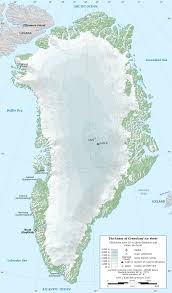
Introduction
The Greenland Ice Sheet has captured the attention of climate scientists and policymakers around the world due to its critical role in global sea-level rise. Covering approximately 1.7 million square kilometers, this massive ice sheet holds enough water to raise sea levels by more than 7 meters if it were to melt completely. Understanding the dynamics of its melting is crucial as it provides insights into climate change and its global ramifications.
Current State of the Greenland Ice Sheet
Recent studies have shown a dramatic increase in the rate of ice loss from the Greenland Ice Sheet. According to a report from the National Snow and Ice Data Center (NSIDC), the ice sheet lost approximately 278 billion tons of ice per year between 1993 and 2019. This alarming trend has been attributed to rising global temperatures and warmer oceans that accelerate melting processes.
Additionally, satellite data from NASA’s GRACE (Gravity Recovery and Climate Experiment) mission indicates that the ice sheet’s massive glaciers, such as Jakobshavn and Helheim, have retreated considerably this century. Notably, the Jakobshavn Glacier, one of Greenland’s largest, has shown a thinning rate of more than 40 meters per year in its front regions, contributing significantly to global sea-level rise.
Impact on Global Sea Levels
The melting of the Greenland Ice Sheet poses a significant threat to coastal communities worldwide. As it melts, it increases the volume of water in the oceans, leading to rising sea levels that can inundate cities and displace populations. By current estimates, it is projected that the Greenland Ice Sheet has raised global sea levels by nearly 7 millimeters since 1993.
Contributing Factors and Future Projections
Multiple factors contribute to the accelerated melting of the Greenland Ice Sheet, including the feedback loops associated with climate change. Warmer air temperatures lead to diminished albedo effect, where darkening of the ice from soot and dust increases heat absorption, further accelerating melting.
Climate models suggest that, if current trends continue, the melting ice sheet could contribute to a rise in global sea levels by between 0.3 and 1.2 meters by the year 2100. This scenario poses serious implications for densely populated coastal regions, which must brace for potential flooding and habitat loss.
Conclusion
The fate of the Greenland Ice Sheet underscores the urgent need for global climate action. Its rapid melting is a stark reminder of the consequences of climate change and highlights the interconnectedness of climate systems across the globe. As scientists continue to monitor and model these changes, we must foster awareness and take collective measures to mitigate climate change impacts, not only for the current generation but for future ones as well.

